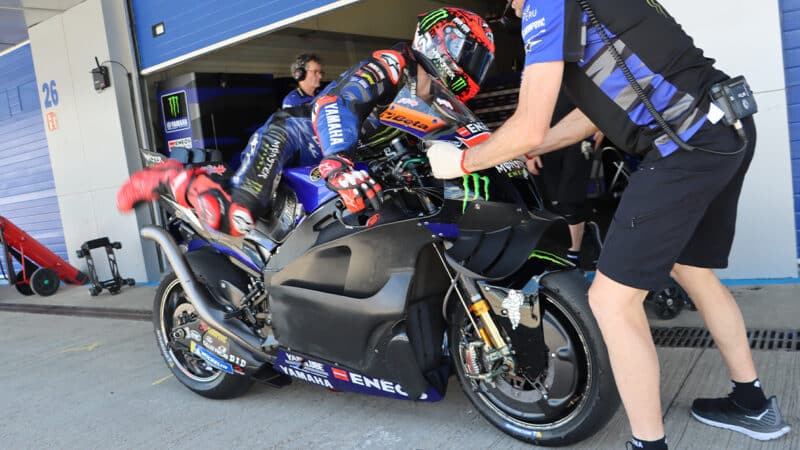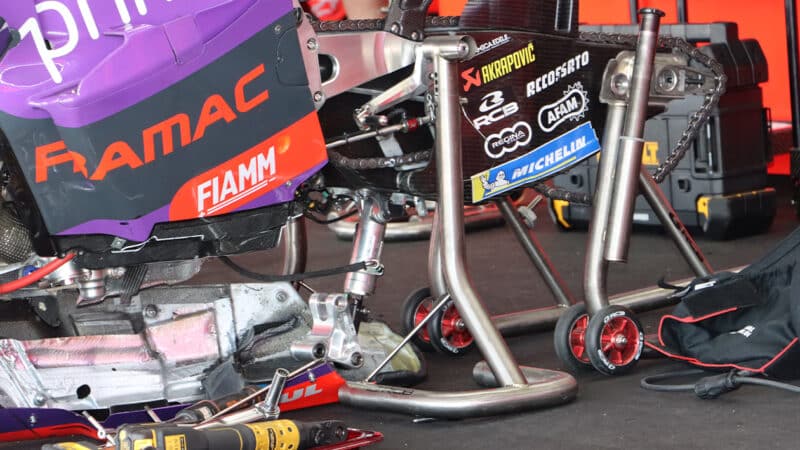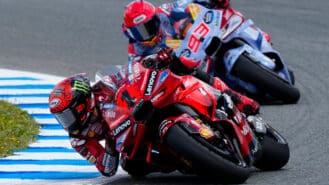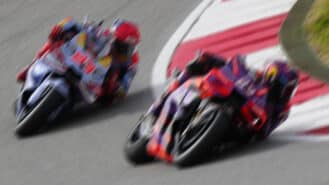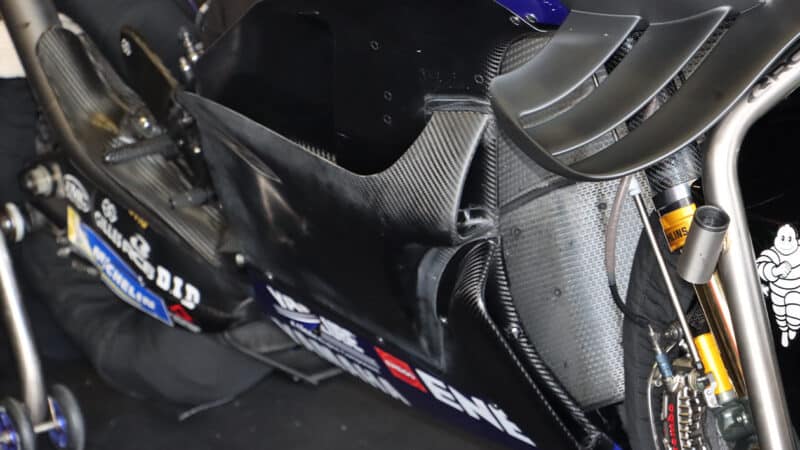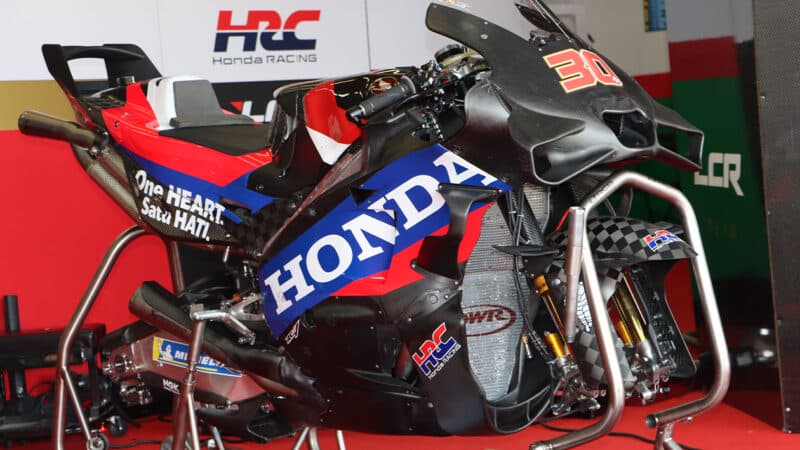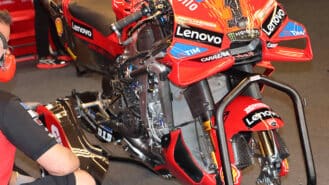This disease is caused by a mismatch between Michelin’s new-for-2024 compounds and some of the bikes, depending on tracks, conditions and possibly what the riders had for breakfast.
It’s also got a lot to do with speed. Lap and race records have been broken at every grand prix so far this year, because the new rubber gives more grip for longer, which can trigger chatter, due to the higher loads.
During the Jerez weekend I bumped into chief engineer Gigi Dall’Igna and popped him the chatter question. “Better,” he grinned. “But it’s not chatter, it’s vibration.”
Therefore my next stop had to be the Öhlins truck where the company’s new lead engineer Jonas Torstensson is based.
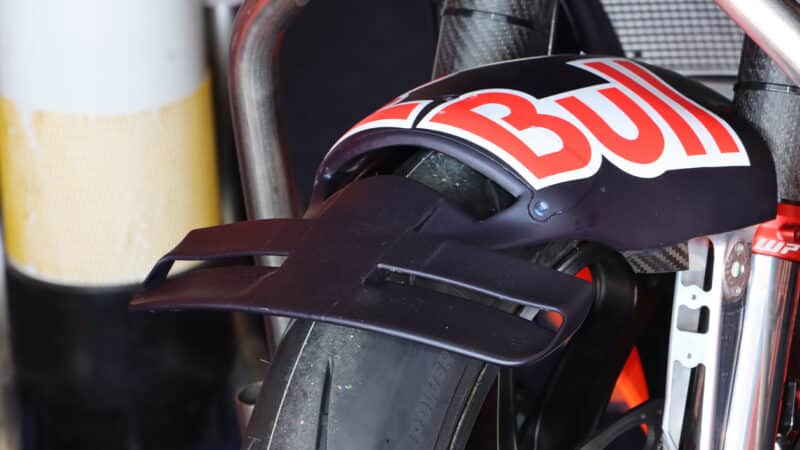
Dani Pedrosa used KTM’s fender winglet all weekend, but none of KTM’s four full-time riders tried it in the tests
Oxley
So, what’s the difference between chatter and vibration? (Bear in mind that most engineers have different opinions about these problems, which isn’t usual in pitlane.)
“I think it’s about semantics,” grins Torstensson. “Chatter is a type of vibration – it’s the tyre slipping, gripping, slipping, gripping, in a range of between 16 and 25 hertz [which means 16 to 25 chatter oscillations per second]. That’s tyre chatter and that’s what we usually refer to as chatter.
“Chatter can go up in the range, to 50 hertz or even 500 hertz. Then you can have lower frequency vibrations from the clutch, the drivetrain, the chassis, the engine, the crankshaft – maybe some unbalanced parts that resonate into the suspension, but that’s past what we call chatter.”
So this would seem to be Ducati’s problem. Could it reappear at super-grippy Le Mans next week? Possibly.
